In the ever-shifting landscape of the automotive market, the value of a car is never static. The dynamics that influence how much a vehicle is worth can be surprisingly complex, driven by a multitude of factors ranging from brand reputation and mechanical reliability to consumer trends and cultural appeal.
For many buyers and sellers, the primary benchmark for a vehicle’s worth is the “book value,” which is essentially an estimated market price calculated by industry experts based on historical sales data, condition, and mileage. However, real-world selling prices often deviate from these estimates, sometimes substantially.
Certain cars defy expectations by selling consistently above book value, while others fail to retain even a fraction of their worth, often ending up sold for scrap. Understanding why this happens is crucial for anyone involved in buying, selling, or investing in vehicles.
The concept of “selling over book value” can seem almost counterintuitive. After all, the book value is designed as a reliable baseline, reflecting what a car should be worth in the open market. Yet, cars that sell above this value often do so because they offer something beyond the textbook calculations — be it rarity, desirability, brand prestige, or a combination of factors that create strong demand among buyers.
Classic cars, limited-edition models, or vehicles with enthusiast followings tend to command premiums, sometimes significantly exceeding their standard valuation. These vehicles carry an intrinsic allure, often tied to nostalgia, performance, or exclusivity, which drives buyers to pay a premium that traditional pricing models don’t fully capture.
Conversely, the other end of the spectrum features cars that fall below book value, sometimes to the point where the scrap value becomes their highest realistic sale price. This scenario arises when a vehicle’s perceived worth is severely diminished by factors such as poor reliability, high maintenance costs, low demand, or a tarnished brand image.
Vehicles in this category tend to be mass-produced economy cars or those with known mechanical or design flaws, which discourage used car buyers who are keenly aware of the total cost of ownership. When the cost and effort required to maintain or repair a car outweigh the potential resale price, owners often opt to sell the vehicle for scrap rather than trying to find a buyer willing to pay more.
The divergence in value trajectories between these two groups highlights the importance of understanding what makes a car desirable and what makes it a liability in the used car market. Factors such as mechanical reliability, brand perception, supply and demand, cultural cachet, and even timing in the market all play significant roles.
For example, a car with a strong enthusiast community or historical significance can maintain or even increase its value over time. In contrast, cars that suffer from chronic issues or fall victim to poor design decisions often depreciate rapidly, sometimes to the point where scrapping becomes the only viable option.
In this article, we will explore five cars that consistently sell for over their book value, shedding light on why they maintain or increase their worth despite age or mileage.
We will also examine five cars that frequently sell for scrap value, analyzing the pitfalls and challenges that consign them to this fate. By understanding these extremes, prospective buyers and sellers can make more informed decisions, avoiding costly mistakes and potentially identifying vehicles that hold their value or even appreciate over time.
Whether you are a casual driver, a car enthusiast, or someone navigating the complex world of used car sales, the patterns uncovered in this discussion reveal the fascinating interplay between economics, psychology, and automotive engineering.
These insights not only help in predicting which cars are good investments but also provide a deeper appreciation for the factors that contribute to a vehicle’s desirability and longevity in the marketplace.
Ultimately, recognizing why some cars outperform market expectations while others falter to the scrapyard can empower consumers and collectors alike to navigate the automotive market with confidence and savvy.
Also Read: 5 SUVs With the Best Headlight Throw and 5 With Dark Spots
5 Cars That Sell Over Book Value
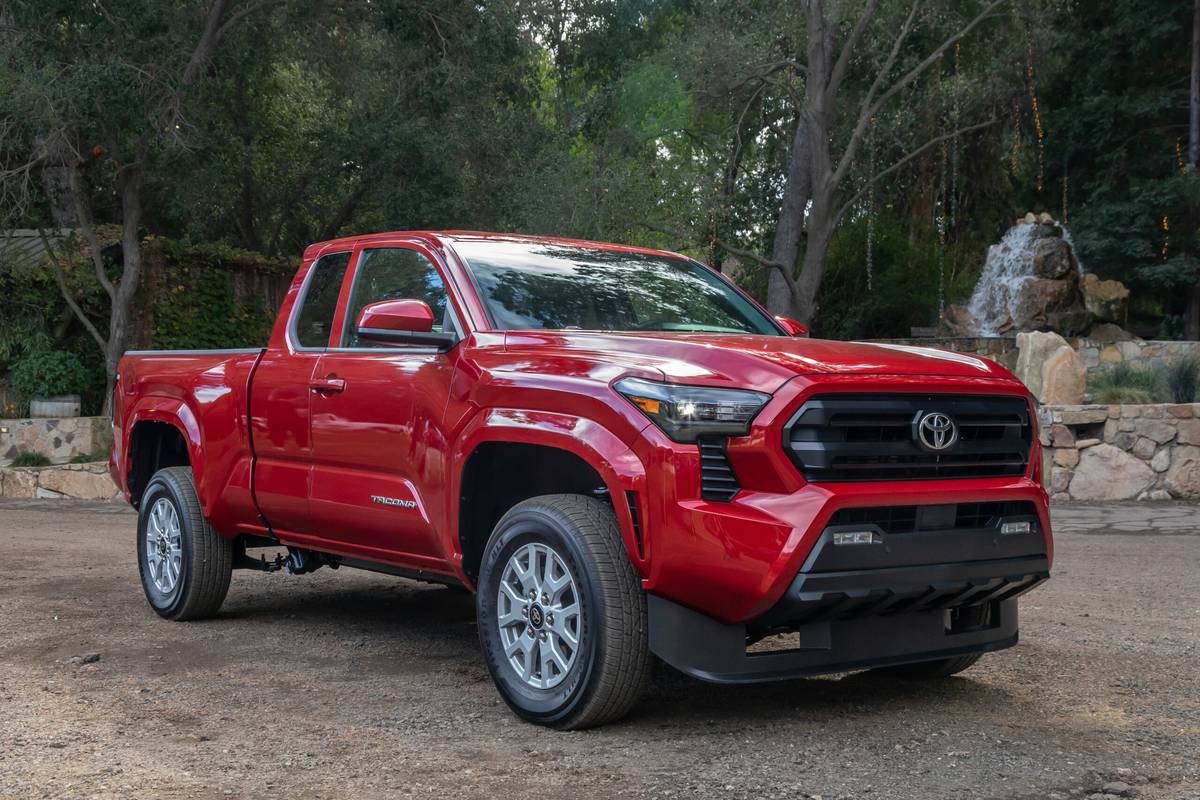
1. Toyota Tacoma
The Toyota Tacoma has long been celebrated as one of the most dependable midsize pickup trucks on the market, and this reputation is a key driver behind its ability to sell consistently above book value. What truly sets the Tacoma apart is its combination of rugged durability and everyday practicality.
Unlike full-size trucks that may offer more power but often at the expense of fuel economy, the Tacoma strikes a balance that appeals to a broad spectrum of drivers, from contractors needing a reliable workhorse to outdoor adventurers craving off-road capability. This versatility has built a loyal customer base that keeps demand high even years after the vehicle’s release.
Moreover, the engineering behind the Tacoma is often described as bulletproof; engines, transmissions, and chassis components have been proven to withstand hundreds of thousands of miles with proper maintenance, which breeds confidence among used car buyers. This confidence translates into a willingness to pay a premium, pushing prices beyond what standard valuation guides might predict.
A critical factor that compounds Tacoma’s value retention is its persistent supply-demand imbalance. New Tacomas have faced production constraints, especially during recent global supply chain disruptions.
This shortage at the factory level sends ripple effects into the used vehicle market, where buyers who cannot get a new model turn to the secondary market, effectively bidding up prices for used Tacomas.
Unlike many vehicles that flood the used car market as they age, Tacomas tend to be held onto for longer periods, and low supply of well-maintained examples combined with strong demand results in higher-than-average resale prices.
Geographic factors also come into play—regions with rugged terrain or heavy snowfall, such as the Pacific Northwest and parts of Colorado, particularly prize Tacomas for their four-wheel-drive capabilities, which further drives up local resale values.
Fuel economy is another appealing aspect that helps the Tacoma retain value. While larger trucks often struggle with poor mileage, the Tacoma offers a more balanced fuel economy, which is crucial in today’s era of fluctuating fuel prices and environmental awareness.
Buyers who need a truck but want to keep operating costs reasonable gravitate toward the Tacoma, viewing it as a long-term investment rather than a depreciating liability.
The truck’s maintenance costs are also relatively predictable and affordable compared to some competitors with more complex systems. This practical ownership cost model has earned Tacoma a reputation as an economical vehicle in the long run, which positively influences resale prices.
Lastly, the strong aftermarket ecosystem surrounding the Toyota Tacoma cannot be overstated. From suspension lifts and off-road tires to bed racks and custom bumpers, the Tacoma has become a favorite platform for enthusiasts looking to personalize their trucks.
This robust aftermarket support fuels a passionate community that often meticulously maintains their vehicles, preventing premature wear and tear. The pride of ownership demonstrated by many Tacoma owners means that well-cared-for trucks command a price premium.
Additionally, modified or upgraded Tacomas can sometimes fetch prices well beyond stock models, creating a niche market where uniqueness and customization further inflate resale values. This vibrant, involved community contributes significantly to Tacoma’s ability to maintain prices above book value.
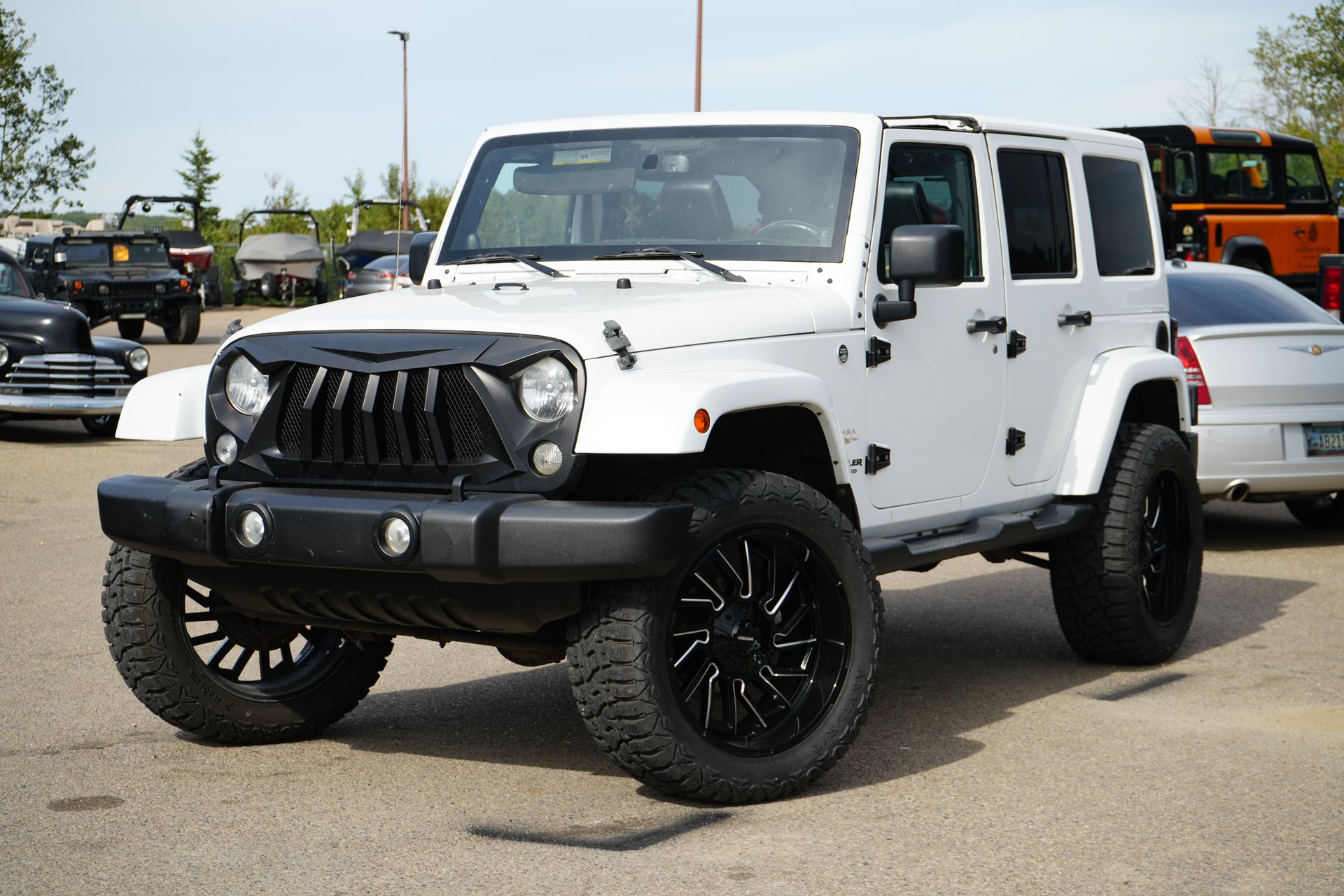
2. Jeep Wrangler
The Jeep Wrangler’s ability to command prices well above its book value stems from its iconic status and cultural resonance that few vehicles in the world can match. The Wrangler is not just a vehicle; it’s a symbol of freedom, adventure, and rugged individualism. This emotional connection creates demand that transcends the normal economic principles of depreciation.
Unlike many SUVs that fall victim to fast technological obsolescence or shifting tastes, the Wrangler has maintained a consistent design philosophy and brand ethos that strongly appeals to both older enthusiasts and younger buyers looking for a lifestyle vehicle.
The Wrangler’s design remains almost timeless, and models from decades ago still retain the classic Jeep aesthetic that is instantly recognizable and highly desirable. This unique position in the automotive market allows certain Wrangler models, especially limited editions or those with desirable features such as four-door configurations, to sell at a premium that defies typical depreciation curves.
Community and culture are huge contributors to the Wrangler’s value retention. Jeep owners are among the most dedicated vehicle owners globally, forming clubs, attending off-road events, and sharing their experiences on social media. This communal bond extends to maintaining and restoring Wranglers, ensuring that high-quality used models remain in circulation rather than falling into neglect.
The aftermarket for Wrangler parts is enormous, with countless modifications available ranging from lift kits and reinforced bumpers to high-performance engines and advanced lighting systems. Buyers interested in off-roading or simply wanting a rugged, unique vehicle are willing to pay more for Wranglers that have been thoughtfully upgraded or well maintained, further pushing resale values beyond book value.
Another reason Wranglers sell for more than their listed book values is their utility and versatility. While many buyers see them as weekend toys or off-road machines, Wranglers also function well as everyday vehicles, with newer models offering improved comfort and technology.
This blend of rugged off-road capability and increasing on-road refinement broadens the buyer pool. The growing popularity of outdoor recreational activities and overlanding further fuels demand for Wranglers, particularly in regions where such activities are popular.
Given the limited production numbers and relatively high desirability, Wranglers remain scarce in used car inventories, leading to competitive bidding and prices that often surpass standard book values.
Finally, the Jeep brand’s heritage and motorsport legacy help sustain the Wrangler’s value. Jeep’s history in World War II and off-road racing contributes to the brand’s mystique and perceived authenticity, which is a powerful marketing tool that resonates with buyers.
Limited edition Wranglers, such as the Rubicon and other special trims, benefit immensely from this heritage, sometimes appreciating in value as collectors seek out the best examples. The Wrangler’s unique combination of history, culture, versatility, and aftermarket support creates a perfect storm for higher-than-expected resale prices that continue to defy depreciation norms.

3. Honda Civic (Certain Generations)
The Honda Civic has been a cornerstone of affordable, reliable transportation for decades, but some specific generations of the Civic have transcended their practical roots to become highly sought-after vehicles that regularly sell for more than their book value.
In particular, Civic models from the 1990s and early 2000s have achieved cult status among car enthusiasts for their mechanical simplicity, modifiability, and solid reliability.
These cars are often seen as entry points into the tuning and import scene, where owners seek to customize their Civics with aftermarket performance parts and aesthetic modifications. The fact that these vehicles are relatively easy and inexpensive to upgrade keeps demand high among younger buyers and hobbyists, which drives prices up beyond typical market expectations.
Moreover, Honda’s engineering excellence and reputation for longevity mean many older Civics are still on the road today, but well-maintained models with lower mileage have become increasingly rare. This scarcity boosts prices for clean, original examples, particularly in popular trims like the Si, which offer enhanced performance and styling over the base model.
The Civic’s fuel efficiency also makes it attractive as a daily driver, even for buyers who might not be interested in modifications, expanding its appeal and supporting higher resale prices. Furthermore, Honda’s wide availability of parts and robust dealer network make repairs and upgrades affordable, reinforcing the Civic’s position as a reliable and economical choice.
Cultural factors also play a major role in the Civic’s sustained value. The car’s extensive presence in motorsports, particularly in grassroots racing and tuner culture, has elevated its status far beyond that of a mere compact sedan.
Civics are often featured in automotive media, movies, and car shows, further embedding them into popular culture and stimulating demand.
This cultural cachet has helped older Civics maintain value, especially among collectors and enthusiasts who are willing to pay premiums for the right model years, trims, and conditions. The sense of community among Civic owners fosters a market where demand outstrips supply, particularly for well-maintained or lightly modified examples.
Lastly, the Civic’s value retention is enhanced by its overall versatility. While known for its sporty variants, the Civic also serves as an excellent commuter car and first vehicle, which keeps demand broad and steady. Unlike many other compact cars, the Civic has a reputation for exceeding expected lifespans and retaining functionality well into high mileage.
This reputation not only increases consumer confidence but also ensures that well-maintained Civics remain a sought-after commodity in the used car market. These combined factors explain why select generations of the Honda Civic continue to sell well above book value despite their age.
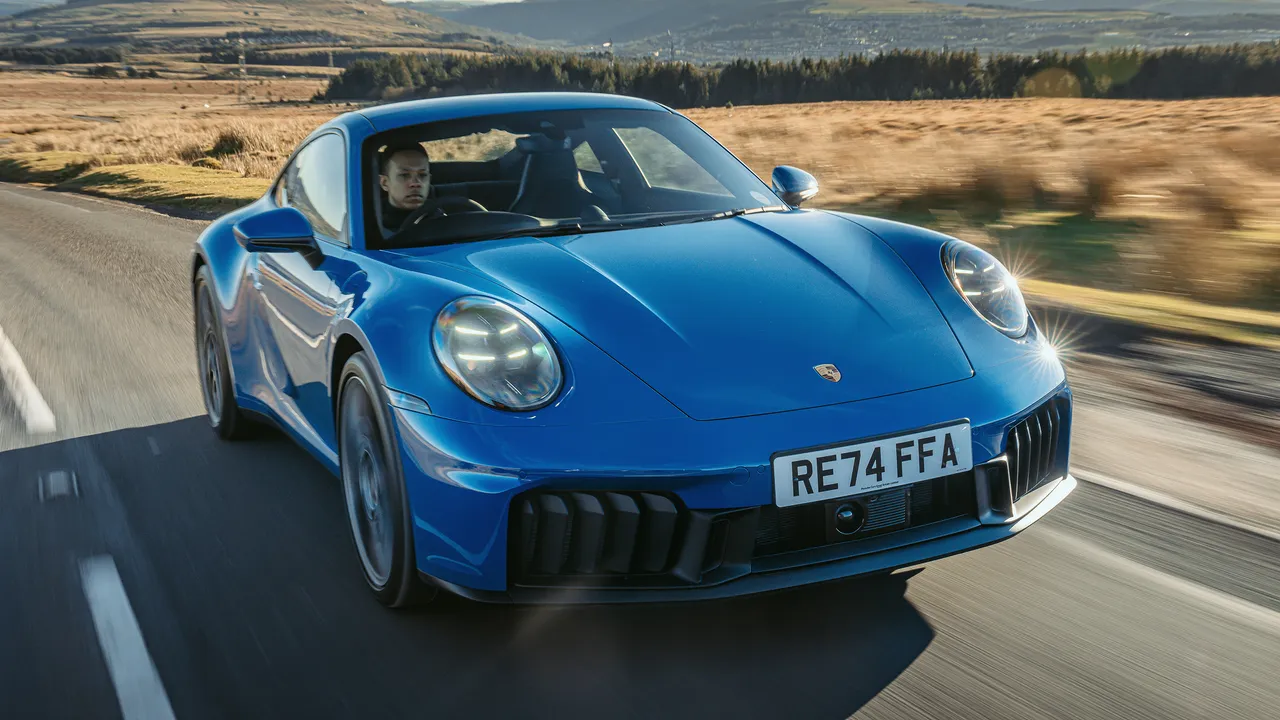
4. Porsche 911 (Classic Models)
Classic Porsche 911s are perhaps the epitome of cars that sell well beyond their book value, largely because they exist in a rarefied category where automotive passion, art, and investment intersect.
The 911’s legendary status as one of the greatest sports cars ever produced is built on a combination of timeless design, exceptional engineering, and motorsport pedigree that few other vehicles can match.
Early models, especially those from the 1960s and 1970s, are widely regarded as masterpieces of automotive craftsmanship and performance. Their scarcity—many were produced in limited numbers and have survived in fewer quantities—only amplifies their value in the collector market.
These cars are often viewed not just as vehicles but as appreciating assets and cultural icons, leading to price points that far exceed traditional book valuations.
Another reason for the 911’s high resale value is its driving experience, which many consider unmatched in the sports car world. Porsche’s meticulous attention to detail and engineering prowess has resulted in a car that balances raw performance with everyday usability.
Classic 911s have a unique character and feedback that enthusiasts crave, which enhances their desirability and fuels competition in the used market.
As a result, examples in excellent condition or with original parts are highly prized and command substantial premiums. The emotional connection many buyers feel towards these cars encourages them to pay beyond the typical market value to secure one.
The Porsche brand itself carries an aura of exclusivity and prestige that supports higher resale values. Ownership of a classic 911 signals a certain status and appreciation for automotive history, which resonates strongly with collectors and enthusiasts.
This brand cachet attracts a global pool of buyers, some of whom are willing to pay significant sums to obtain a piece of Porsche’s storied legacy. Furthermore, Porsche’s continuous innovation and consistent evolution of the 911 line have cemented its place as an icon that appreciates rather than depreciates, making these cars attractive as long-term investments.
Finally, the 911’s motorsport heritage enhances its value. Its success in racing events worldwide, from endurance races to rallying, imbues the car with an aura of performance excellence and excitement.
Limited edition and rare models—such as early Carrera or RS variants—benefit immensely from this heritage and are often auctioned for staggering amounts, reflecting their desirability.
This intersection of rarity, performance, brand prestige, and cultural significance explains why classic Porsche 911s continue to be among the most valuable vehicles in the used car market, routinely fetching prices above their book value.
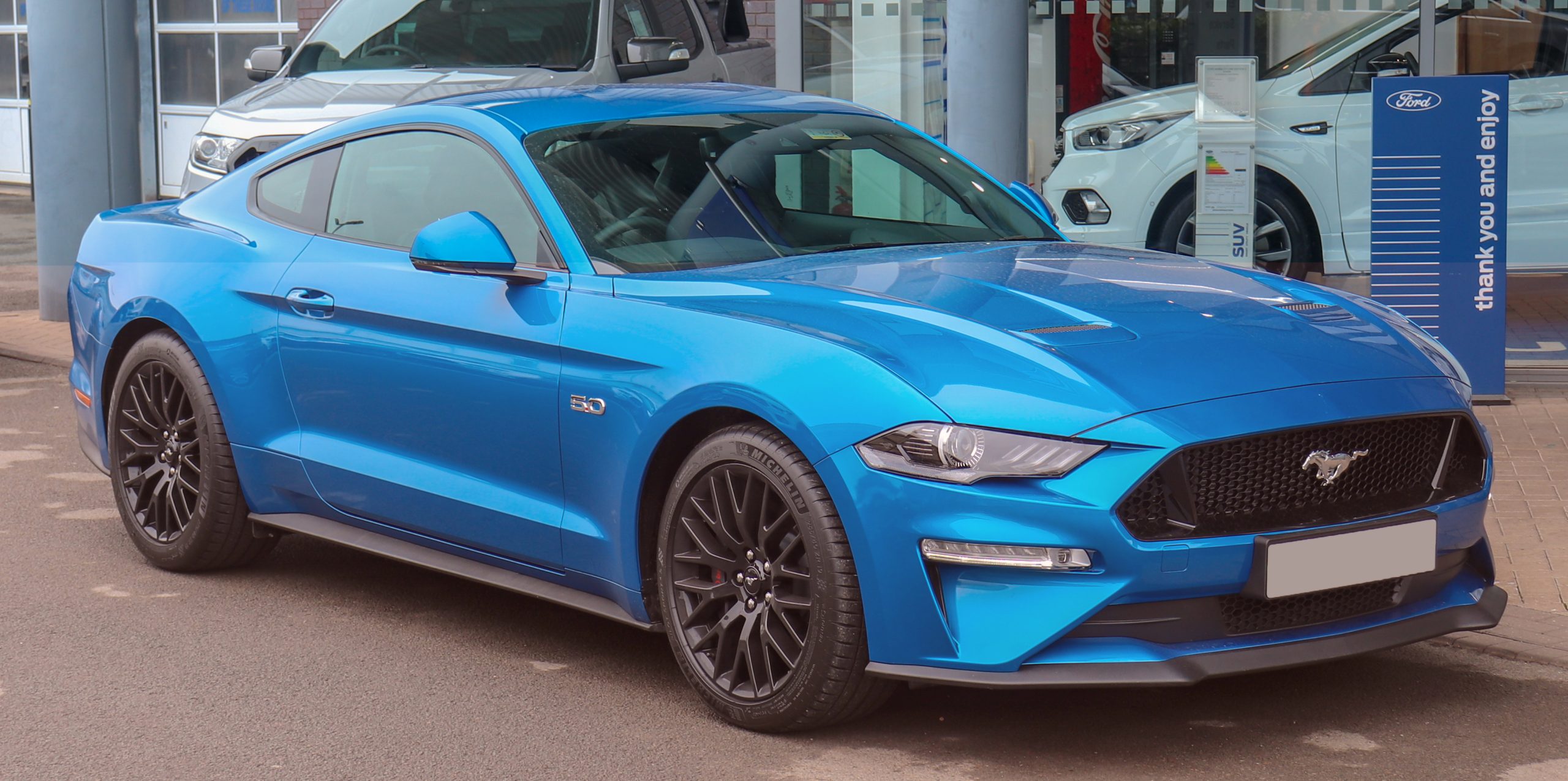
5. Ford Mustang (First Generation)
The first-generation Ford Mustang is an automotive legend whose cultural impact and historical importance have propelled it to sell far above book value for decades. Introduced in the mid-1960s, the Mustang created an entirely new segment—the pony car—and captured the American public’s imagination with its affordable price, sporty styling, and strong performance options.
Today, these early Mustangs are not just collector cars; they are rolling pieces of Americana that evoke nostalgia and pride, factors that heavily influence their resale prices. Well-maintained or restored first-generation Mustangs, especially those with original parts and documented histories, command prices far beyond what traditional valuation guides might suggest.
The Mustang’s appeal is deeply tied to its role in popular culture. It has starred in countless movies, television shows, and advertisements, becoming a symbol of freedom, youth, and rebellion.
This iconic status means that demand for first-generation Mustangs remains strong among collectors, hobbyists, and enthusiasts who view these cars as timeless treasures rather than depreciating assets. Special versions such as the Shelby GT350 or Boss 302 are particularly sought after, often selling for multiple times their book value due to their rarity and performance heritage.
Moreover, the Mustang’s relatively simple mechanical design compared to modern cars makes restoration projects more accessible and affordable.
This encourages enthusiasts to buy and preserve these vehicles, helping to maintain a strong market for well-kept examples. The availability of reproduction parts and the active community of Mustang owners contribute to the car’s ongoing desirability. Restoration efforts often increase the car’s value significantly, with high-quality restorations fetching premium prices.
Finally, the Mustang’s influence on the American automotive landscape and its status as a symbol of the muscle car era mean that it is frequently regarded as an investment.
Classic car collectors often view first-generation Mustangs as appreciating assets, which supports elevated pricing in the used market. This combination of historical significance, cultural impact, and enthusiast interest ensures that the first-generation Ford Mustang continues to sell well above book value, decades after its initial release.
5 Cars That Go for Scrap
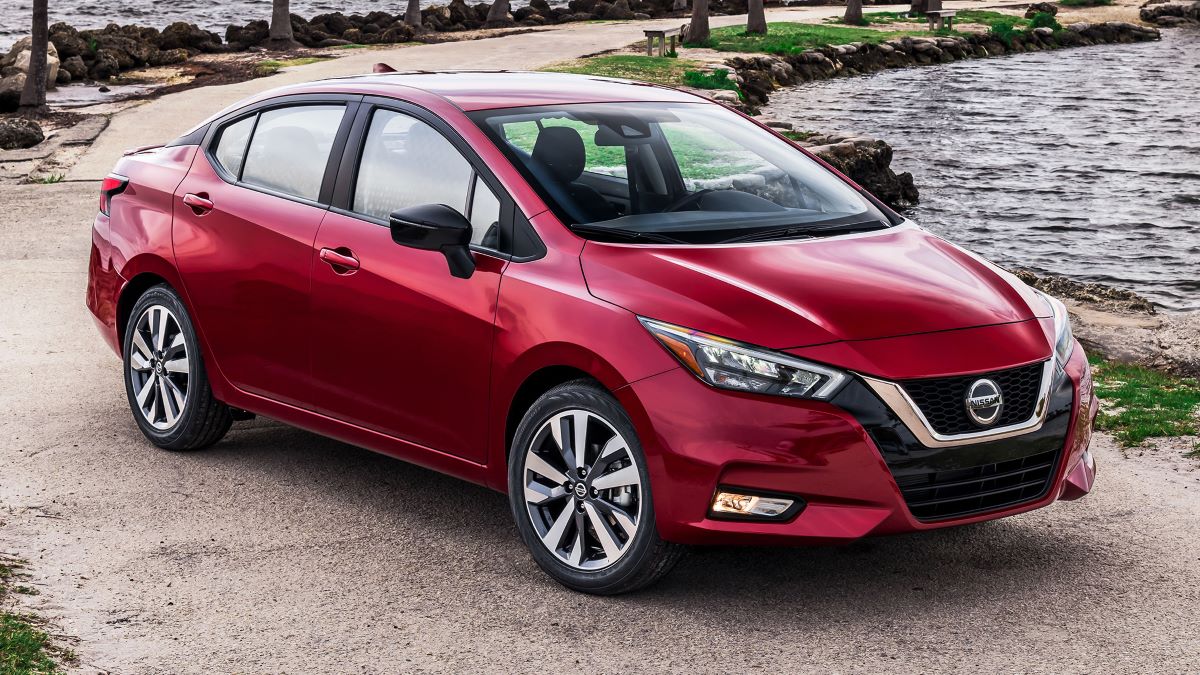
1. Nissan Versa
The Nissan Versa is often cited as one of the least desirable used cars on the market, and unfortunately, it frequently ends up being sold for scrap value or close to it. Despite its low initial purchase price and fuel efficiency, the Versa suffers from a reputation for poor build quality and lackluster driving dynamics that severely hamper its resale value.
Many owners find the car lacking in refinement—the interior materials feel cheap, the ride is uncomfortably firm or sometimes overly bouncy, and the engine delivers underwhelming power.
While these issues might be tolerable in a brand-new economy car designed for basic transportation, they become major deterrents once the vehicle ages and competitors on the used market offer better overall packages at similar or lower prices.
Furthermore, the Nissan Versa’s mechanical reliability, while not terrible, doesn’t stand out in a crowded subcompact segment. Repair costs, particularly when key components like the CVT transmission fail, can be disproportionately high compared to the vehicle’s overall value.
The CVT transmission used in many Versas has been known to have issues that lead to costly repairs or replacements, which makes potential buyers wary of purchasing used models without a comprehensive service history.
Because the cost of ownership begins to outweigh the low purchase price, the pool of buyers shrinks dramatically, especially when competing models like the Toyota Yaris or Hyundai Accent offer better reliability and resale values.
Another significant factor contributing to the Versa’s poor resale value is its lack of strong brand loyalty or enthusiast appeal. Unlike many other cars that develop a dedicated following—such as the Honda Civic or Toyota Corolla—the Versa is viewed largely as a basic transportation tool with little to no emotional connection.
This perception results in reduced demand in the used market, driving prices down close to or below book values as sellers scramble to offload the car quickly. Additionally, the Versa lacks any significant aftermarket support, which means there are few opportunities for owners to modify or upgrade their vehicles in ways that might increase desirability or value.
Lastly, the sheer number of Nissan Versas produced also impacts its market value negatively. Because it was marketed aggressively as an affordable entry-level vehicle, large quantities were sold, leading to significant supply in the used market. Over time, this glut of inventory drives prices down further, especially as many models accumulate high mileage and wear due to their budget-oriented construction.
In regions where harsh weather conditions cause rapid deterioration of low-cost vehicles, Versas tend to accumulate rust and mechanical wear quickly, accelerating their path to the scrapyard.
In sum, the Nissan Versa’s combination of mediocre quality, unremarkable driving experience, questionable reliability, and high supply makes it one of the most common cars to sell for scrap rather than retaining any meaningful resale value.
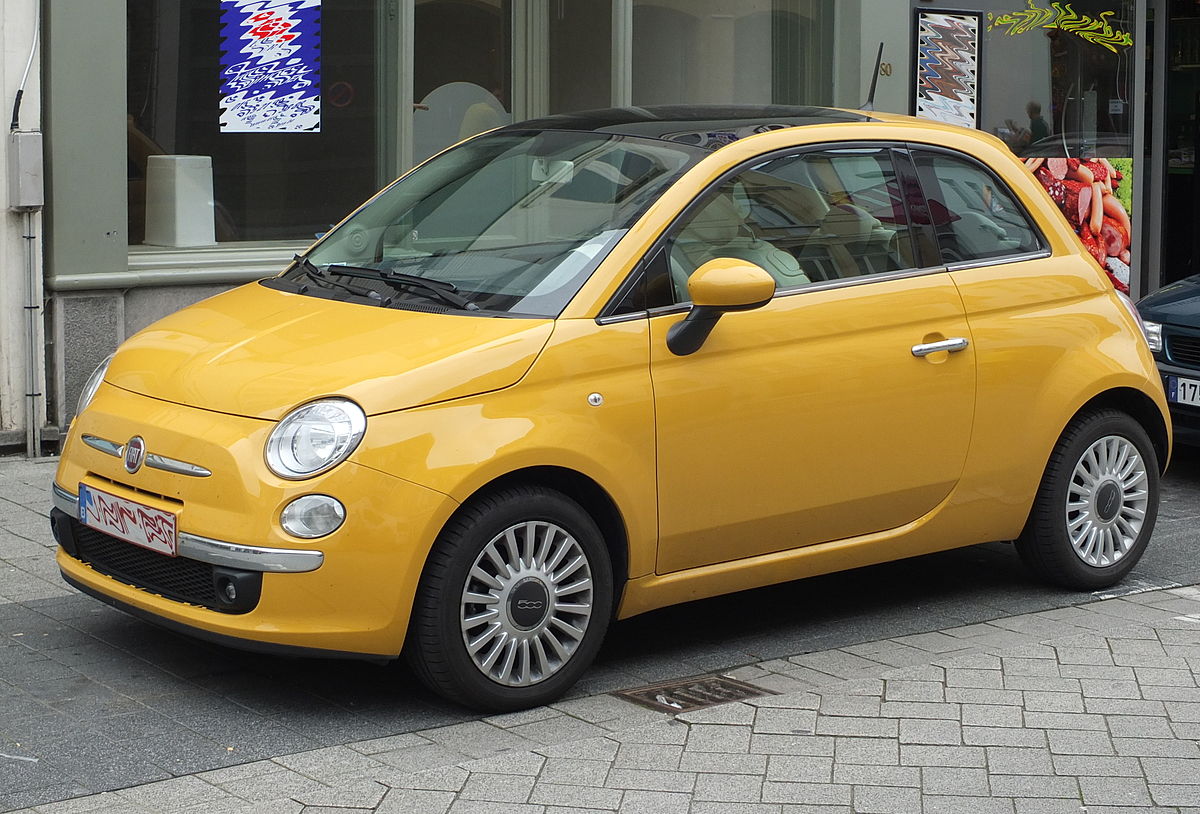
2. Fiat 500 (Early Models)
The Fiat 500, particularly the earlier model years following its reintroduction in the 2010s, has earned a notorious reputation for poor reliability and high ownership costs, which contributes to its rapid depreciation and tendency to be scrapped rather than sold at a fair market value.
Despite its retro charm and distinctive styling, the Fiat 500’s small size and quirky nature are often overshadowed by frequent mechanical problems. Early models were plagued by issues ranging from electrical system failures to transmission problems, causing many owners to face ongoing repairs that quickly add up. For many prospective buyers, the cost and hassle of maintaining these small European cars outweigh the appeal of their design, causing prices to drop sharply in the used market.
A critical problem lies in the Fiat 500’s build quality and engineering choices that often do not meet the expectations of buyers used to more mainstream Japanese or American small cars. The vehicle’s components and systems sometimes lack robustness, resulting in frequent visits to the mechanic for issues such as power steering failures, braking system glitches, or engine warning lights that don’t resolve easily.
These frequent malfunctions make the Fiat 500 a risky buy, especially for budget-conscious buyers who worry about potentially expensive repairs. Furthermore, parts availability outside of major urban centers can be limited, driving up repair times and costs, further discouraging resale interest.
The resale market for the Fiat 500 is also hampered by limited practicality and comfort. While the car’s compact footprint makes it ideal for city driving and tight parking situations, the small interior space and firm ride quality can deter buyers looking for everyday usability or family-friendly features.
Additionally, the Fiat 500’s small engine and light weight can result in underwhelming performance in some driving conditions, limiting its appeal beyond niche urban environments. These factors restrict the buyer pool to a relatively small group of enthusiasts or city dwellers, who are often cautious buyers due to the car’s reliability record.
Lastly, Fiat’s brand perception in the U.S. market has been challenging, affecting demand for used vehicles. Despite attempts to revitalize the brand, many consumers associate Fiat with unreliable, quirky European cars that require more attention than their competitors.
This perception depresses resale values, leading many Fiat 500 owners to part ways with their cars for little more than scrap value once significant repairs become necessary. The combination of poor reliability, high maintenance costs, limited practicality, and negative brand perception make early model Fiat 500s prime candidates to be scrapped rather than sold on the used market.
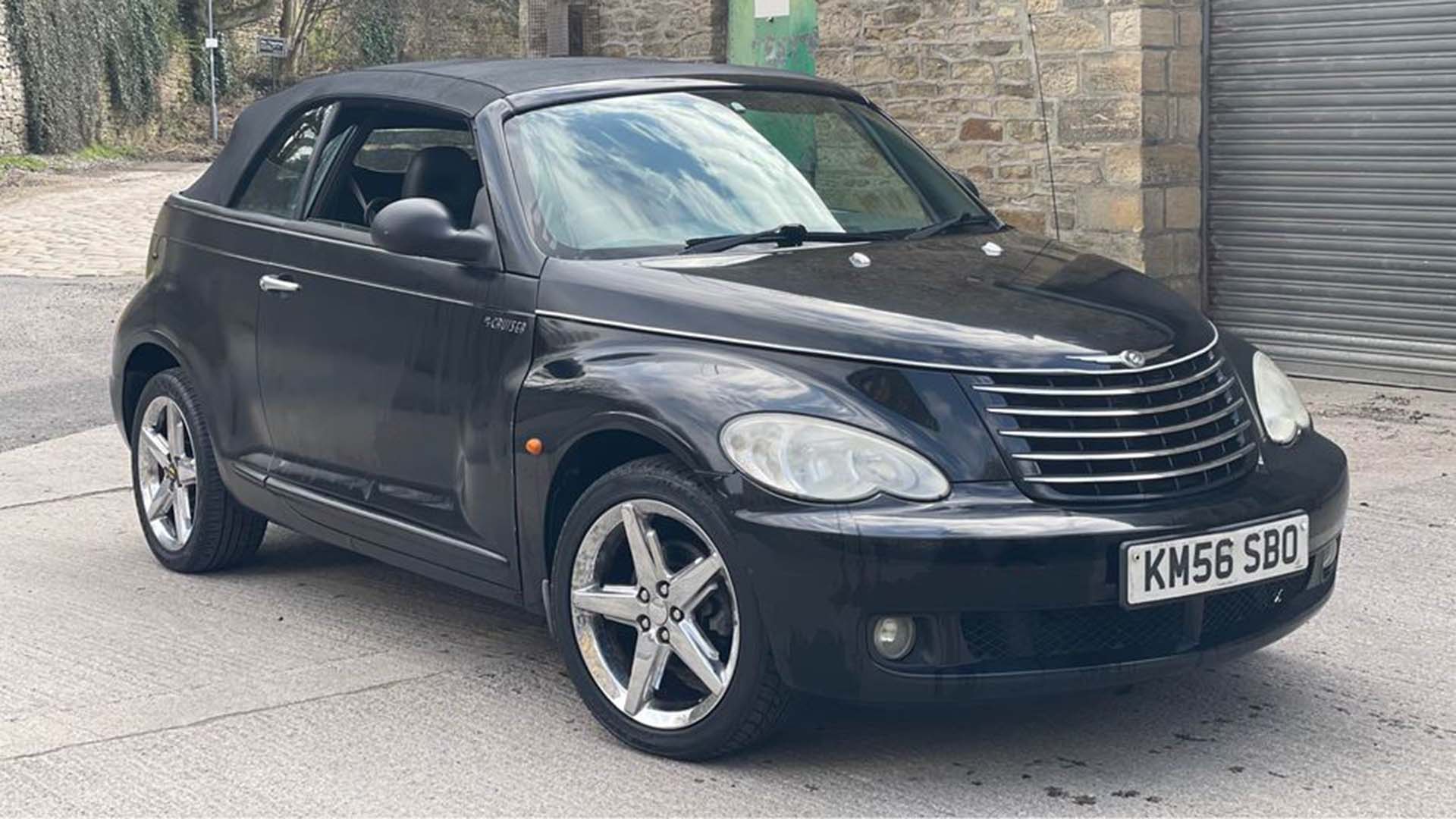
3. Chrysler PT Cruiser
The Chrysler PT Cruiser, a car that once enjoyed popularity for its retro styling and unique design, has over time become a vehicle that struggles to maintain its value, often selling for scrap in the later years of its lifespan. The PT Cruiser’s polarizing aesthetic, while initially attracting buyers who wanted a distinctive, nostalgic look, has faded in appeal as tastes shifted toward more modern and practical vehicles.
This shift leaves the PT Cruiser with a dwindling buyer base as many owners find it difficult to resell the vehicle once its novelty wears off. While the car was moderately successful during its production run, the lack of refinement, below-average build quality, and dated technology have contributed to its rapid depreciation.
Mechanically, the PT Cruiser is plagued by issues common in older vehicles that have not aged well. Engine troubles, transmission failures, and electrical system glitches become increasingly frequent as mileage rises, pushing repair costs above the car’s residual value.
The 2.4-liter four-cylinder engine, though reasonably powerful for its class, is known for consuming oil and developing mechanical problems that can be costly to fix.
Additionally, the PT Cruiser’s interior materials and overall construction quality were often criticized, with many owners experiencing rattles, premature wear, and failing components that contribute to an overall sense of cheapness. These factors discourage used car buyers who are increasingly discerning about reliability and longevity, further depressing resale prices.
Another factor leading to the PT Cruiser’s poor resale value is its limited practicality. Despite being a compact car with a hatchback design, its interior space and cargo capacity fall short compared to newer crossover SUVs and compact hatchbacks that have become dominant in the market.
As consumer preferences moved towards vehicles offering greater versatility, fuel efficiency, and modern amenities, the PT Cruiser was left behind, and its resale market shrank accordingly.
Those looking for a vehicle in the PT Cruiser’s price range now have access to options with far better safety ratings, technology, and efficiency, making the PT Cruiser an unattractive choice on the used market.
Finally, the PT Cruiser’s association with a bygone era of automotive styling and its discontinuation in 2010 mean that parts and service become more difficult and costly over time, further discouraging prospective buyers. Enthusiast interest in restoring or preserving PT Cruisers remains limited, which contrasts sharply with other retro-styled vehicles that have developed strong followings.
Consequently, many PT Cruisers reach the end of their road with owners opting to scrap rather than invest in repairs or restoration. The car’s combination of declining desirability, mechanical issues, limited practicality, and lack of aftermarket support seals its fate as a vehicle more likely to be scrapped than sold at a healthy resale price.
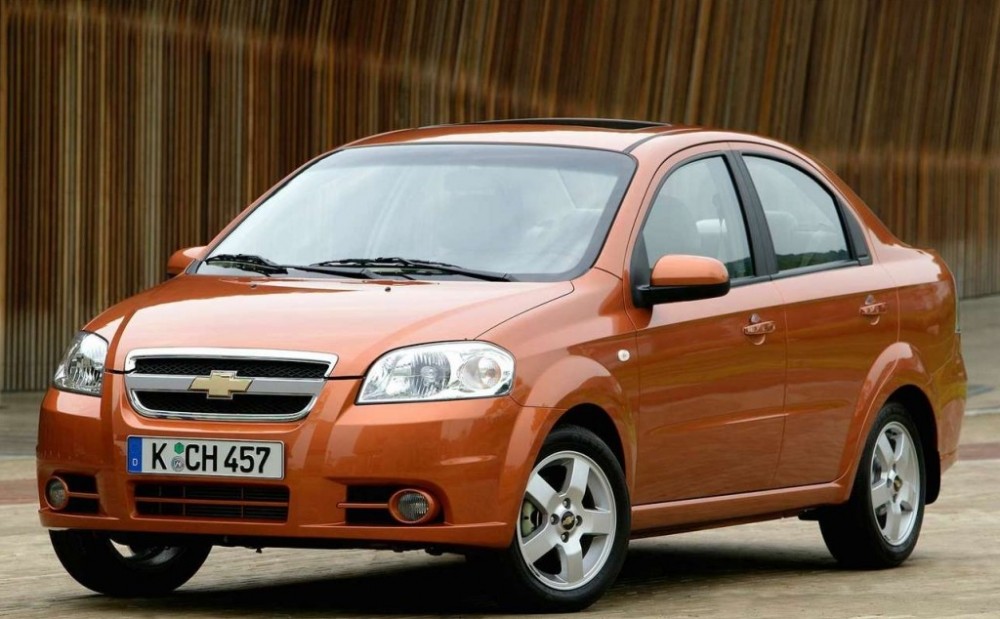
4. Chevrolet Aveo
The Chevrolet Aveo has often been regarded as an entry-level economy car that, while initially affordable, quickly loses value and often ends its days being sold for scrap. The Aveo’s early models, derived from a Korean design originally manufactured by Daewoo, suffer from a perception of low build quality and uninspiring performance that hampers resale value.
While the Aveo provides basic transportation, it lacks many of the features and refinement expected by modern used car buyers, making it less attractive compared to competitors in the subcompact segment such as the Honda Fit or Ford Fiesta. This lack of appeal is compounded by underpowered engines and a noisy cabin, resulting in an overall driving experience that is often described as bland and uninviting.
Reliability issues further diminish the Aveo’s standing in the used market. Owners have reported frequent electrical problems, engine issues, and transmission troubles, which add up to a costly ownership experience.
Because the Aveo’s original price point was low, these repair costs often surpass the vehicle’s residual value, leading many owners to abandon repairs and sell the car for scrap or at heavily discounted prices.
Additionally, the availability of aftermarket parts is limited, and the car’s design is relatively basic, offering little incentive for owners to invest in upgrades or modifications that might improve desirability or value.
The Chevrolet Aveo’s safety ratings also lag behind more modern competitors, which affects buyer confidence. In an era where safety features and crash-test performance have become significant factors influencing purchasing decisions, the Aveo’s outdated safety equipment and lower ratings discourage buyers in the used car market.
This further shrinks the pool of potential buyers, resulting in depressed resale prices that often do not exceed scrap value. Many drivers opt instead for newer or more reputable alternatives, leaving the Aveo as a car that’s often considered disposable.
Lastly, the Aveo’s bland styling and lack of brand appeal contribute to its poor market performance over time. Unlike Chevrolet’s more popular models, the Aveo does not evoke much enthusiasm or emotional connection, which makes it difficult for owners to find buyers willing to pay a reasonable price.
Its commonality and lack of standout features mean it rarely attracts interest beyond the most basic transportation needs, which usually translates to low demand in the resale market.
In areas with harsh climates or heavy usage, Aveos tend to deteriorate quickly, accelerating their transition from used car to scrap. Overall, the combination of mediocre build quality, uninspiring performance, safety concerns, and minimal appeal ensures that the Chevrolet Aveo is a car that often ends up sold for scrap.

5. Smart Fortwo
The first-generation Smart Fortwo, while innovative and ahead of its time in some ways, has largely struggled to maintain resale value, frequently selling near or below scrap value due to a variety of factors related to its niche design, limited practicality, and mechanical concerns.
The Smart Fortwo was designed primarily as a city car, emphasizing extreme compactness, fuel efficiency, and ease of parking. However, these benefits come with significant compromises that have limited its long-term appeal in the used car market.
Its tiny size, while perfect for tight urban spaces, restricts passenger comfort and cargo capacity, making it unsuitable for many buyers who require more versatility in their vehicles.
Mechanically, early Smart Fortwos have been prone to various issues that raise concerns about reliability and maintenance costs. The vehicle’s unconventional design, including its unique chassis and small-displacement engine, requires specialized servicing that may not be widely available or affordable in many locations.
Problems with the automated manual transmission and electrical gremlins have been commonly reported, leading to expensive repairs that discourage potential used car buyers. Moreover, parts can be costly and harder to source, especially for older models, which further diminishes the car’s appeal in the secondary market.
The Smart Fortwo’s safety ratings and crash performance also contribute to its limited desirability. While the car’s small size is an advantage for city maneuverability, it poses significant challenges in collisions, and the Fortwo’s small crumple zones and light weight raise concerns for potential buyers prioritizing occupant safety.
Compared to larger, more conventional vehicles that offer better crash protection and more advanced safety features, the Fortwo often comes up short, reducing its competitive edge and resale appeal. This concern weighs heavily on many buyers, especially families or those who prioritize safety in their purchase decisions.
Finally, the Smart Fortwo’s highly specialized nature means it caters to a narrow niche market that doesn’t sustain strong used car demand. While it is appreciated by certain urban dwellers and eco-conscious drivers, the overall pool of buyers is limited.
Without broad appeal, prices tend to drop sharply as the vehicle ages, and many owners find it economically prudent to sell their Fortwo at or near scrap value once maintenance costs rise or the vehicle begins to show its age.
The limited resale market, coupled with mechanical and practical limitations, ensures that the first-generation Smart Fortwo often struggles to retain value and frequently ends up in scrapyards rather than on used car lots at a premium.
Also Read: Top 10 Most Reliable Used Cars You Can Buy for Under $10,000 in 2025
Navigating the world of used cars is an exercise in understanding value beyond mere numbers. While book values provide a foundational reference for pricing, the real market is shaped by much more nuanced factors—some tangible, like mechanical reliability and condition, and others intangible, such as brand loyalty, cultural appeal, and rarity.
This complex ecosystem means that some vehicles not only retain their worth but can also command prices above the expected market value, often due to desirability and scarcity.
On the flip side, certain cars, despite their initial affordability and accessibility, often depreciate sharply, losing market demand and ultimately being sold for scrap. Recognizing the underlying causes of these divergent value trends is essential for making informed automotive decisions.
The cars that manage to sell over book value typically share a set of qualities that go beyond their mere function as transportation. They often embody a unique combination of cultural significance, enthusiast appeal, or proven reliability that appeals strongly to a dedicated buyer base.
Whether it’s a limited-edition sports model, a well-maintained classic with historical cachet, or a vehicle known for bulletproof reliability and low maintenance costs, these cars benefit from buyer enthusiasm that elevates their market value. Their owners tend to maintain and cherish these vehicles, keeping them in condition that justifies premiums.
For example, vehicles like certain Toyota trucks or iconic muscle cars draw buyers willing to pay extra because they offer an experience, legacy, or utility that transcends mere depreciation.
Conversely, the vehicles that frequently sell for scrap tend to share common negative traits that dissuade buyers and accelerate depreciation. These often include subpar build quality, high maintenance and repair costs, uninspired design, and a weak or tarnished brand reputation.
As such, models like the Nissan Versa, early Fiat 500s, and Chrysler PT Cruisers become difficult to sell in the used market because their ownership costs and perceived reliability risks outweigh their affordable purchase price.
In many cases, these cars do not foster emotional attachment or brand loyalty, making it easier for owners to dispose of them when repair costs escalate. Additionally, their oversupply and lack of enthusiast interest further drive down resale values, relegating many to scrap yards rather than thriving used car lots.
Understanding these dynamics is more than an academic exercise—it has practical implications for everyday consumers, collectors, and automotive professionals. For buyers, recognizing which vehicles hold value and which don’t can help avoid financial pitfalls and costly repairs.
For sellers, knowledge of market trends can guide pricing strategies and timing for vehicle disposal. For collectors and enthusiasts, awareness of market appreciation potential can inform purchasing and restoration decisions. This balanced understanding is critical in a market flooded with options and shifting consumer preferences.
Furthermore, the insights gained from examining these extremes also reflect broader trends in the automotive industry, including shifts toward electric vehicles, changing urban mobility needs, and evolving consumer expectations.
As new technologies and environmental considerations reshape the automotive landscape, the factors influencing vehicle desirability and value will continue to evolve.
Classic internal combustion engines may gain nostalgic value, while electric vehicles may either depreciate rapidly due to technology obsolescence or gain premiums due to environmental trends. This evolving context underscores the importance of staying informed and adaptable when navigating vehicle markets.
In conclusion, the world of car valuation is a vivid illustration of how market forces, consumer psychology, and product quality intersect. The five cars that consistently sell over book value teach us that desirability, reliability, and cultural resonance can powerfully elevate a vehicle’s worth beyond standard metrics.
Meanwhile, the five cars that often sell for scrap highlight the consequences of design flaws, poor reliability, and limited appeal in accelerating depreciation. By understanding these patterns, anyone involved with cars can make smarter decisions—whether buying, selling, or simply appreciating the complex factors that determine what our vehicles are truly worth.
This knowledge transforms car ownership from a gamble into a calculated investment, blending passion with prudence in a way that benefits both wallet and lifestyle.
